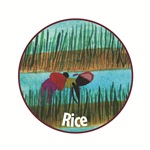Improved rice cultivars for Asian problem soils: Pyramiding of major genes/QTLs for tolerance to phosphorus deficiency and aluminium toxicity (G7010.03.04) 
| Target country |
Indonesia |
| Lead institute |
International Rice Research Institute (IRRI) |
| Partners |
|
In Asia, about 60 percent of rainfed rice is grown on soils that are affected by multiple stresses. These typically include phosphorus (P) deficiency as well as acidity, salinity, aluminium (Al) toxicity and drought. The development of rice cultivars with multiple stress tolerance is therefore considered an important breeding goal.
This project seeks to develop breeding lines with multiple tolerance through pyramiding of individual QTLs, starting with combined tolerance of P deficiency and Al toxicity. This is particularly relevant in order to fully benefit from Pup1 gene because the tolerance mechanism conferred by Pup1, high relative root growth, would be compromised if cultivars were sensitive to Al toxicity since excess Al severely inhibits root growth and thereby water and nutrient uptake.
P deficiency and Al toxicity are soil-related stresses that typically coincide on acid soils that are very common in the humid tropics. The Pup1 locus has shown its potential in partly overcoming the negative effects of P deficiency. Introgression of Pup1 into widely grown upland and irrigated rice varieties following the marker-assisted backcrossing approach that was successfully applied for submergence tolerance is near completion and the first field experiments were conducted in Indonesia. This project will continue and complete these activities within the commissioned project G4008.41 (Application and validation of the major QTL phosphate uptake 1 [Pup1]), which ended in December 2009. This will ensure that the developed breeding lines and Pup1 marker technology are handed over to country partners in Asia and Africa for testing and development of local Pup1 varieties. –
Objectives
- Map Al-tolerance loci in populations developed from highly Al-tolerant Indonesian upland varieties.
- Develop rice breeding lines with tolerance of P deficiency, drought, and Al toxicity through pyramiding of major target QTLs.
- Disseminate seeds to country partners and assist them in the implementation of screening protocols and marker technology.
- Enable Pup1 cloning in sorghum and maize by providing gene-specific markers and conduct screenings.
Facts and figures on rice (IBP webiste)


